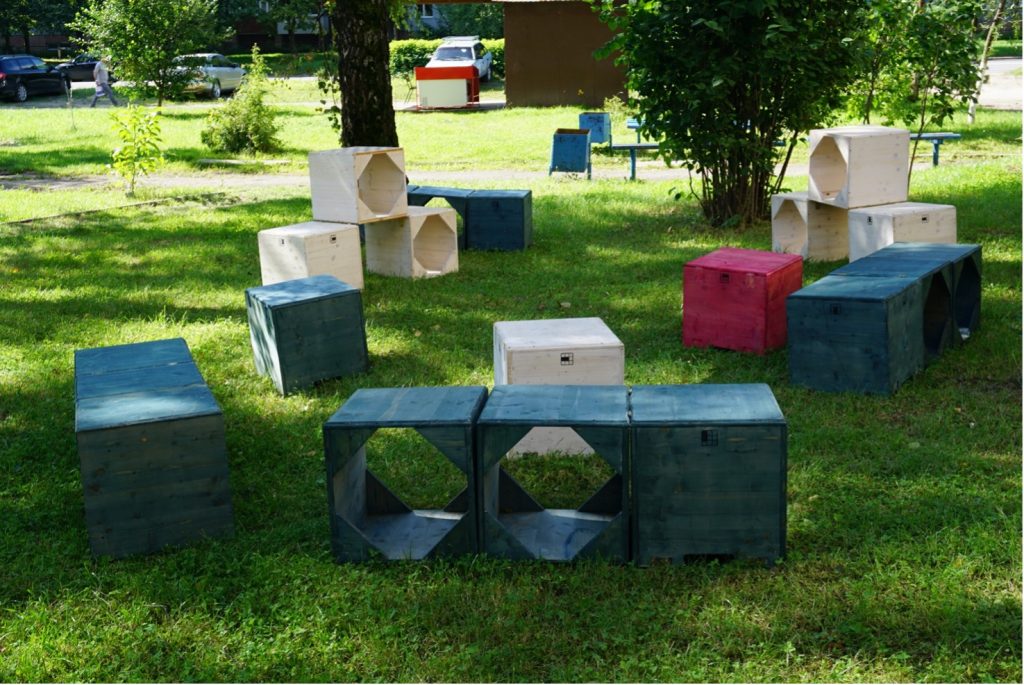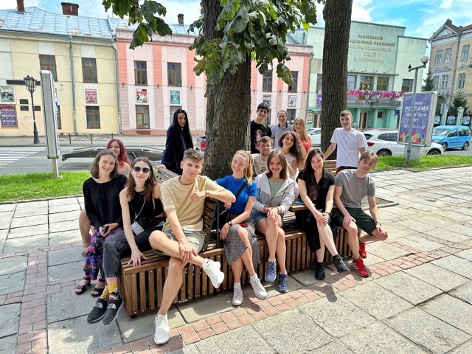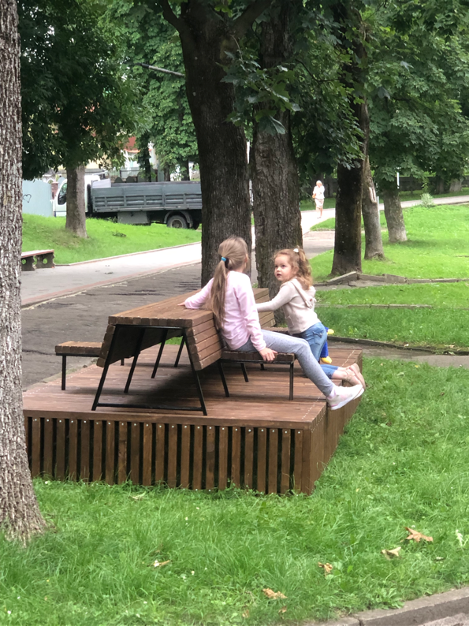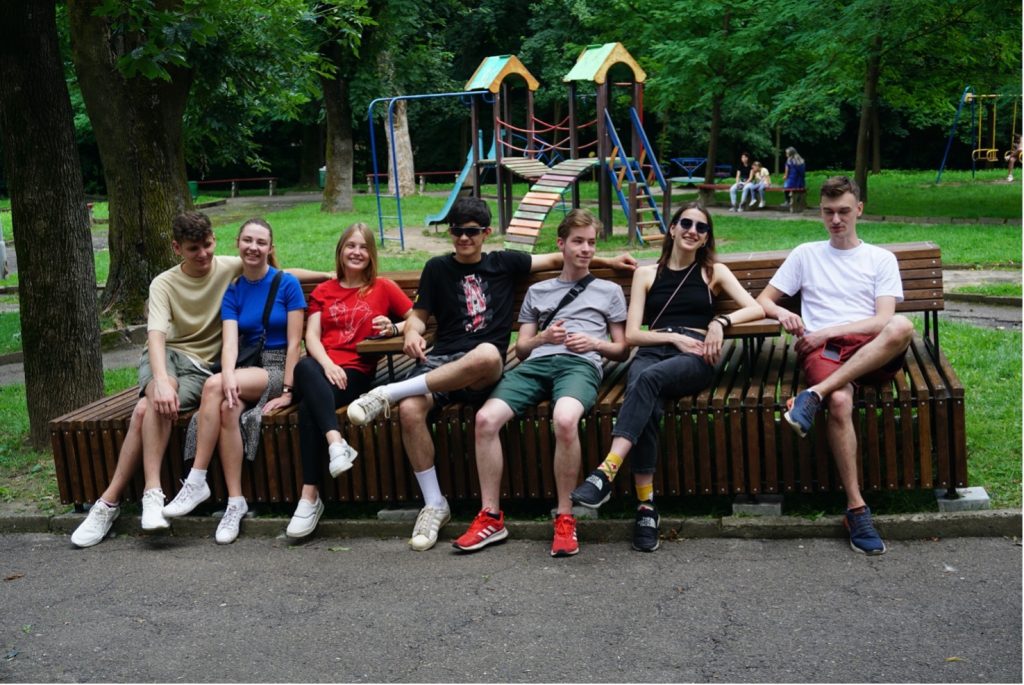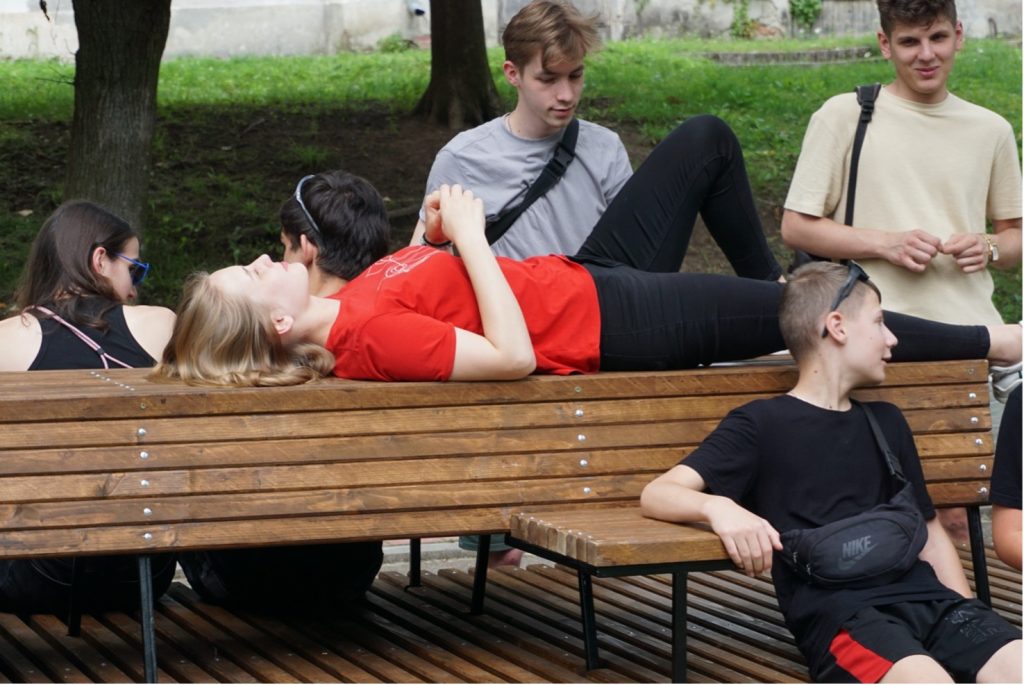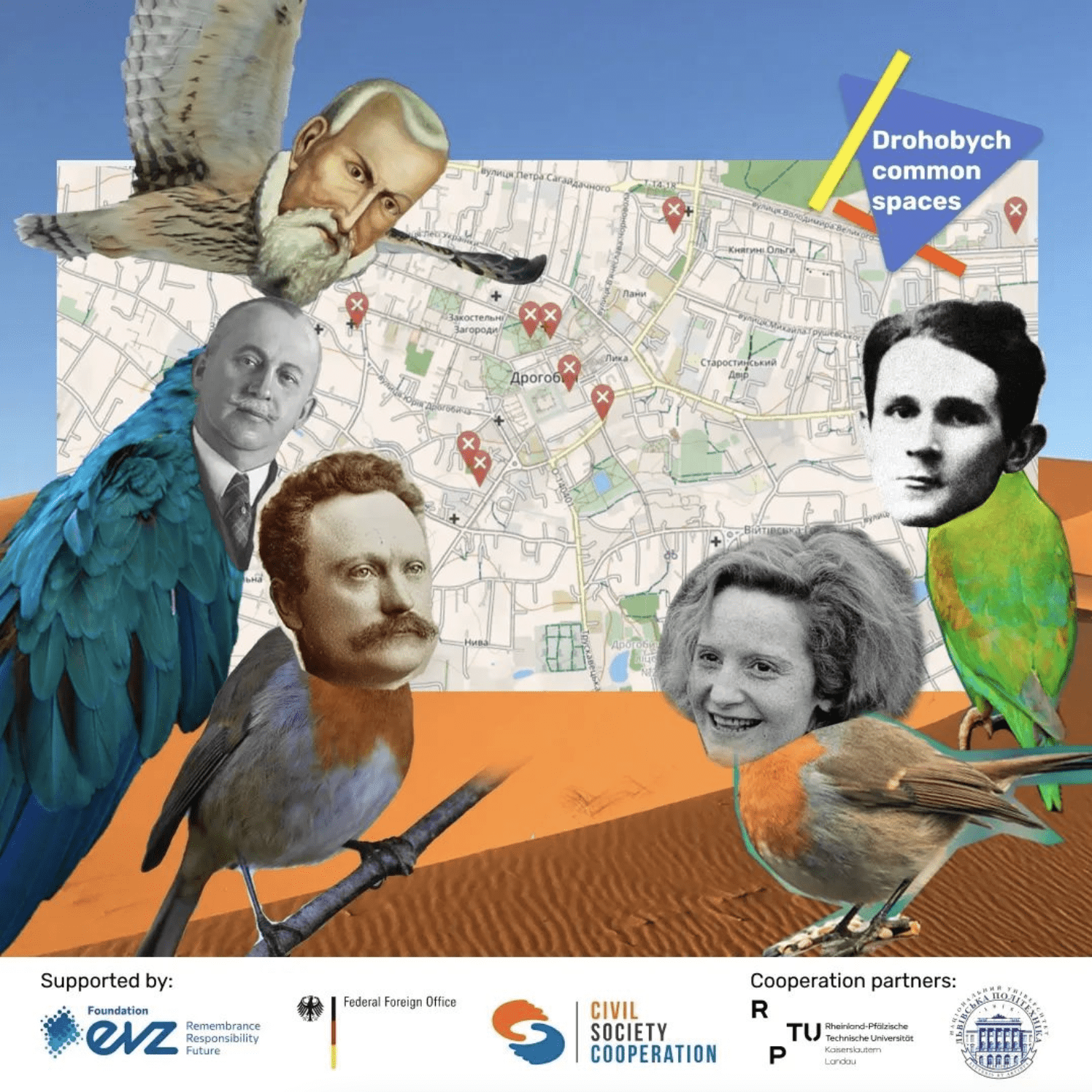During the summer semester of 2023, students from Kaiserslautern University of Technology, Lviv National Polytechnic University, and Kyiv National University of Civil Engineering and Architecture collaborated on a project “Drohobych Common Spaces”. After conducting an extensive contextual analysis and involving the local population in the process, they designed street furniture that aim to enhance the city centre and inspire public space design during times of crisis.
PROBLEM DEFINITION
After Russia’s war of aggression against Ukraine on 24 February 2022, the cities in Western Ukraine were faced with challenges for which they were not prepared: the provision of housing, social and medical infrastructure and jobs for internally displaced. The number of internally displaced kept fluctuating due to changing conditions. Some stayed here for a short time and moved on to Western European countries, others returned to their homeland, to the recaptured towns and villages, and still others decided (or were forced!) to stay.
Now, more than a year later, in the summer of 2023, we can observe relative stability in the movement. However, it is not only the provision of accommodation or infrastructure that remains important, but also the integration of these people into the life of the city. In public debates, we often hear of certain misunderstandings between “native” and “new” residents. Conflicts often arise due to language, mentality or other factors.
PROJECT OBJECTIVES
- Supporting the integration of internally displaced persons into the new city
- Creating new narratives while preserving the self-identity of internally displaced persons
- Establishing a trilateral dialogue between the “new”, the local citizens and the local authorities
The dialogue between the citizens and the “new” inhabitants of the city usually takes place in the public space. This space is an instrument for creating new narratives – it is the “living room” of the city, where every resident, regardless of age, gender or status, feels involved and identifies with it.
Our hypothesis: The integration of the “new” residents can be triggered through the shared use of “co-designed” spaces and participation in public events, workshops and project realisation. By contributing their ideas and resources to the creation or redesign of public space, refugees are given an environment that becomes part of their new story.
In the course of the project, we will test this hypothesis and try to derive the principles and recommendations for the creation of shared spaces. As part of the project, students developed skills to design public spaces based on participatory processes and taking into account potential conflicts. The design ideas were implemented in pilot projects in the joint construction of street furniture.
LEARNINGS
The project shows that students can provide important impulses for the redesign of public space in times of crisis, as a place where internally displaced persons and residents can meet and shape a new urban identity for the future. The students not only worked on the topic theoretically and designed public spaces, but thanks to the support of Meetup, they also discussed it with local residents and built street furniture themselves, which will permanently enhance and revitalise the city centre.
Detailed project description in German and Ukrainian for download or via instagram.
